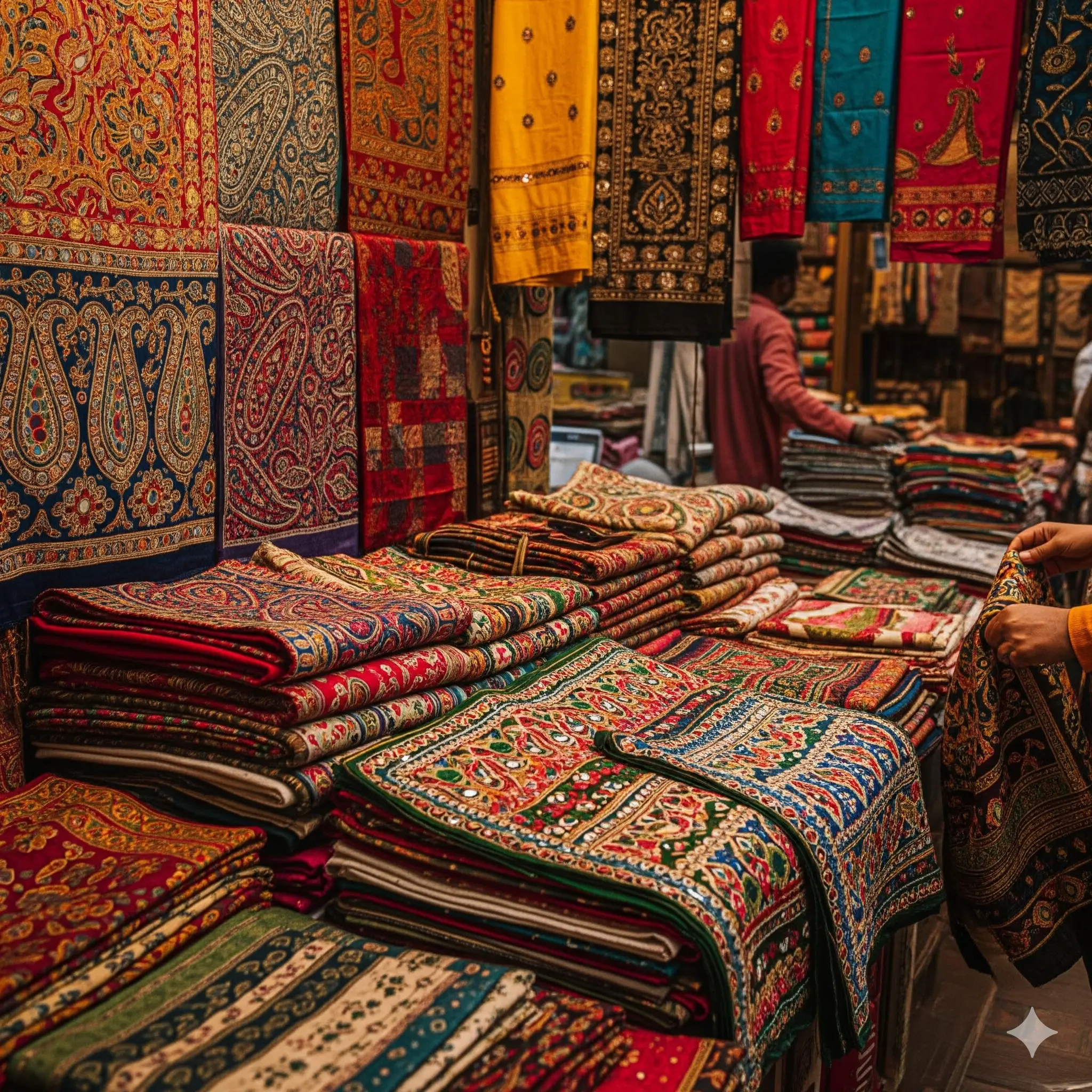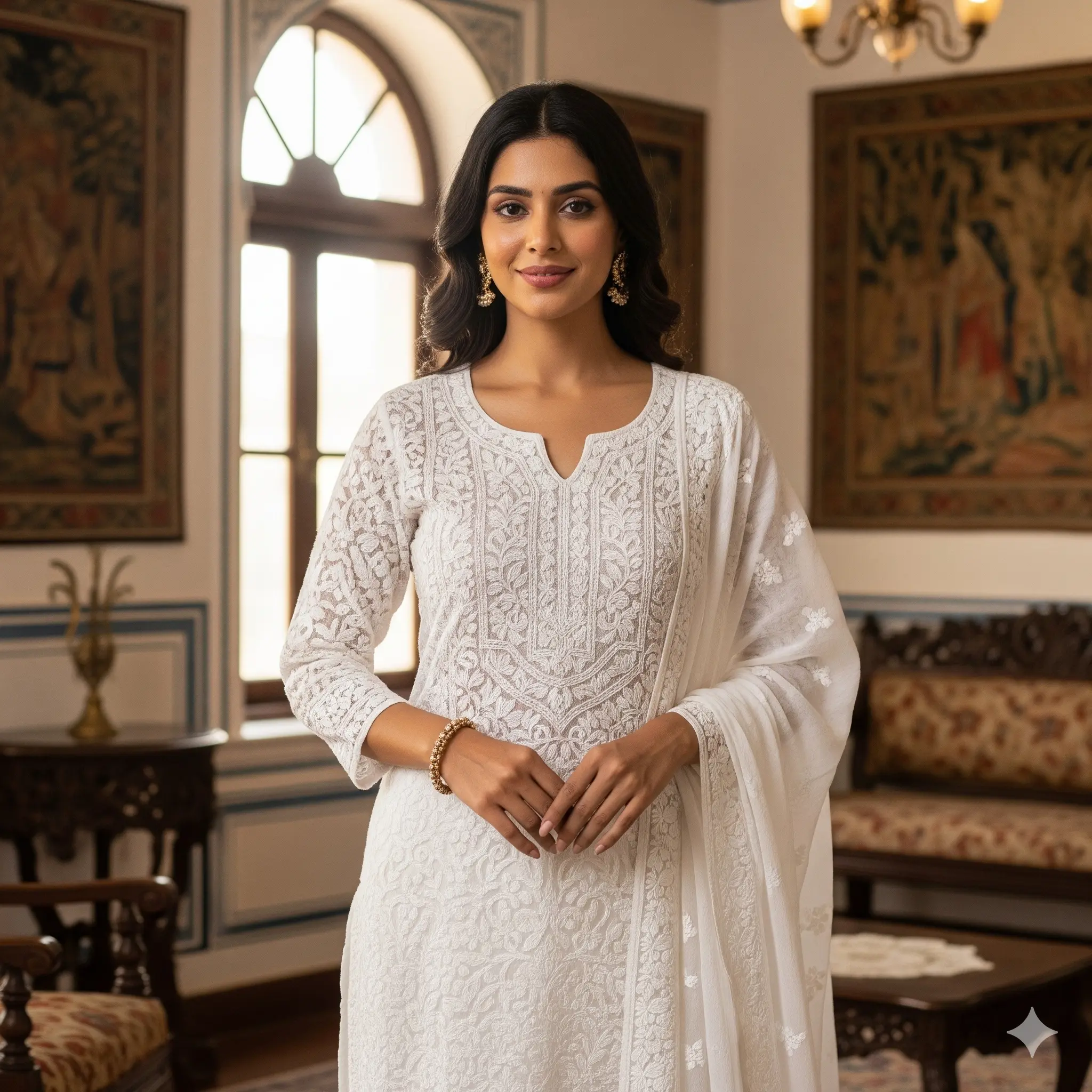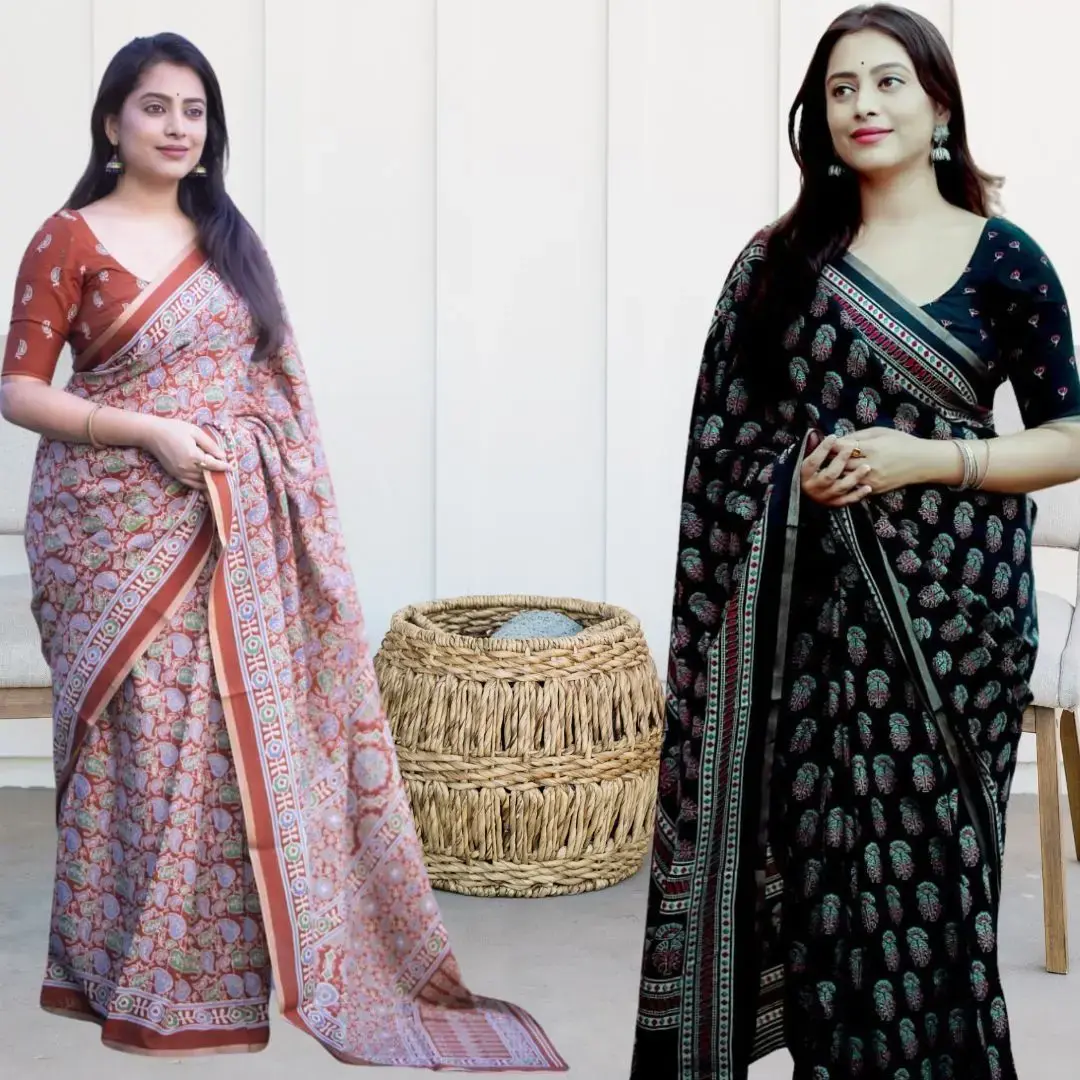Explore India's most iconic textile traditions—Bandhani, Ikat, and Block Print—and learn how these age-old crafts are re...
A Deep Dive into Indian Embroidery Techniques
Indian embroidery is a vibrant tapestry of intricate artistry, where skilled hands weave stories with needle and thread. Each stitch tells a tale, reflecting the diverse cultural heritage and artistic traditions of India. From the delicate Chikankari of Lucknow to the opulent Zardozi of the Mughal era, Indian embroidery techniques have adorned garments and home furnishings for centuries, adding a touch of elegance and cultural richness to everyday life.
Chikankari: The Delicate Art of Shadow and Light
Originating in Lucknow, Uttar Pradesh, Chikankari is renowned for its delicate and intricate white-on-white embroidery. This exquisite art form involves creating subtle shadow work and intricate patterns using a variety of stitches on fine fabrics like muslin and cotton. Chikankari is a labour-intensive process, often involving multiple artisans specializing in different stitches to create a single masterpiece .

Zardozi: The Opulent Embroidery of the Mughals
Zardozi, meaning "gold embroidery," is an exquisite technique that originated in Persia and flourished under the Mughal emperors in India. This opulent embroidery involves intricate designs created using gold and silver threads, often embellished with pearls and precious stones. Zardozi is traditionally used to adorn bridal wear, festive garments, and luxurious home furnishings.
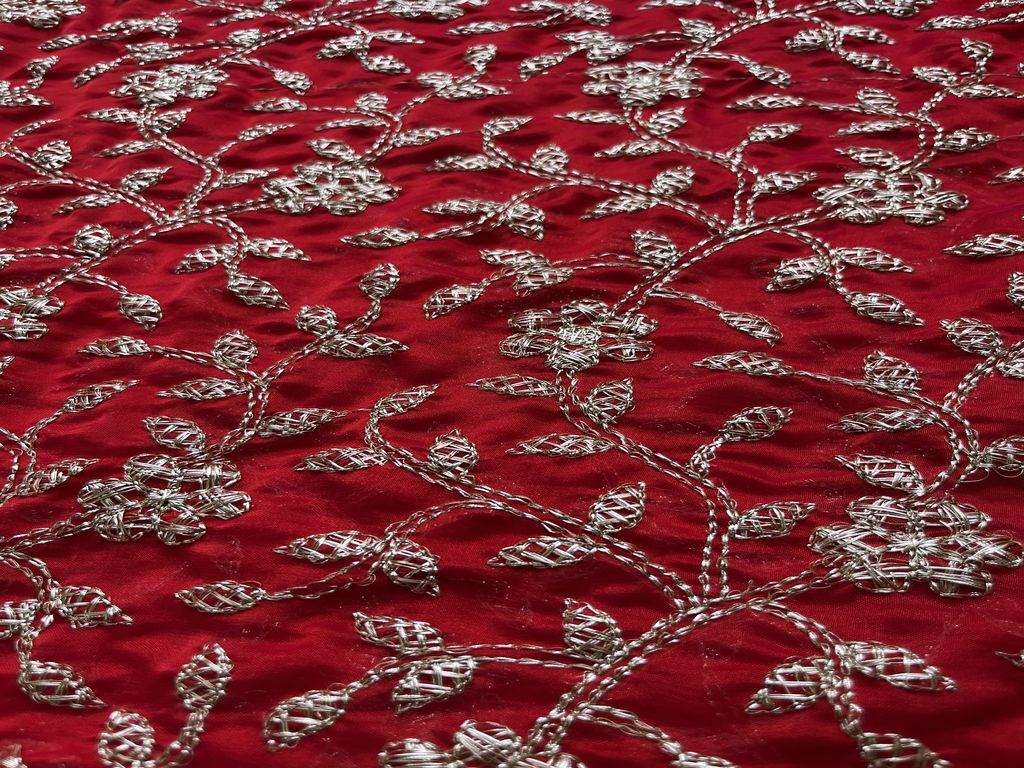
Kantha: The Sustainable Embroidery of Bengal
Kantha embroidery, originating in West Bengal and Bangladesh, is a testament to the resourcefulness and artistry of rural women. This technique involves stitching together layers of old or worn-out fabrics, such as sarees and dhotis, using a simple running stitch to create intricate patterns and designs. Kantha embroidery is not only visually appealing but also environmentally conscious, as it repurposes old textiles into beautiful and functional items.
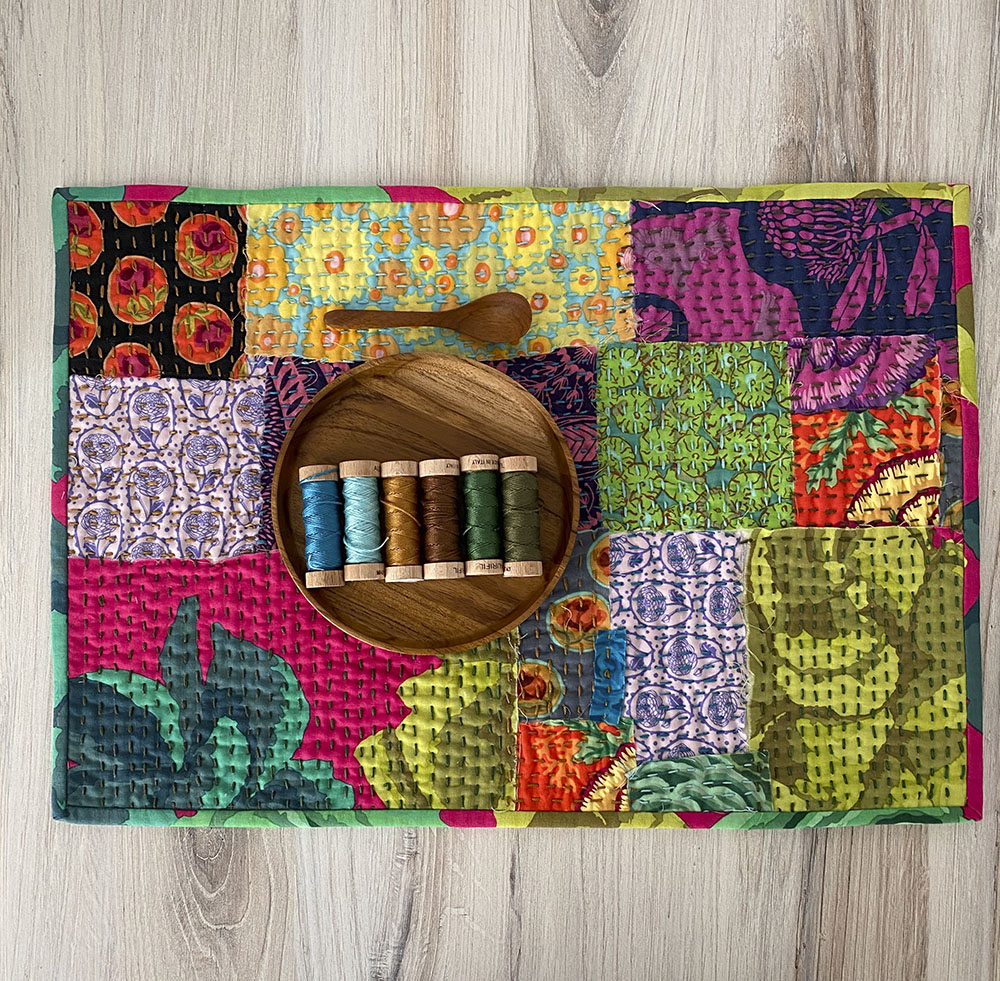
Phulkari: The Vibrant Embroidery of Punjab
Phulkari, meaning "flower work," is a vibrant embroidery style from Punjab that uses colorful threads to create intricate floral patterns on fabrics like khadi and cotton. This technique involves darning stitches on the reverse side of the fabric, creating a raised and textured effect on the front . Phulkari is traditionally used to adorn shawls, dupattas, and festive garments, adding a touch of vibrancy and cultural richness to any occasion.

Mirror Work: The Sparkling Embroidery of Kutch
Mirror work, also known as shisha embroidery, is a popular technique in Gujarat and Rajasthan that involves stitching small mirrors onto fabric to create intricate patterns and designs. This embroidery style adds a touch of sparkle and dimension to garments and home furnishings, and it is believed to ward off evil spirits in some communities .

Aari: The Hooked Needle Embroidery of Kashmir
Aari embroidery, practised in Kashmir and Kutch, uses a hooked needle called an "aar" to create chain stitch loops and intricate designs. This technique is often used to embellish shawls, sarees, and other garments with delicate floral patterns and motifs . Aari embroidery is known for its fine and intricate detailing, adding a touch of elegance and sophistication to any attire.
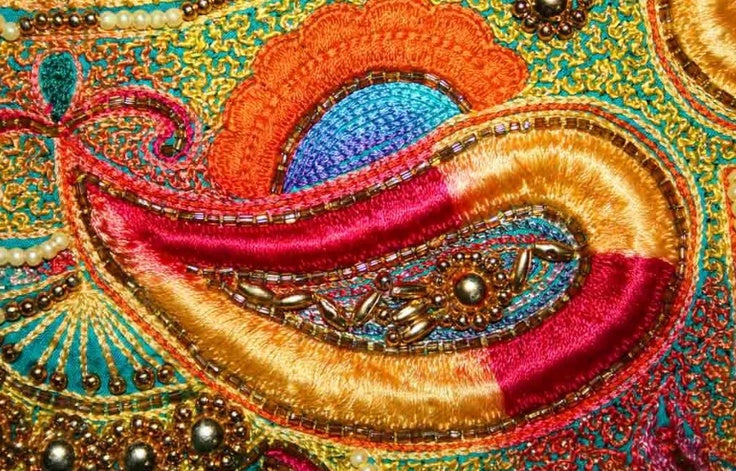
Regional Variations and Modern Adaptations
Indian embroidery is a diverse art form with regional variations in styles, techniques, and motifs. Each region has its own unique embroidery traditions, reflecting the cultural influences and artistic heritage of the area. In modern times, Indian embroidery has evolved to incorporate contemporary designs and applications while preserving the essence of traditional techniques.
Conclusion
Indian embroidery is a testament to the rich cultural heritage and artistic traditions of India. Each stitch tells a story, reflecting the diversity and creativity of the land and its people. From the delicate Chikankari to the opulent Zardozi, these embroidery techniques continue to inspire and adorn garments and home furnishings, adding a touch of elegance and cultural richness to everyday life.
Share:
 العربية
العربية


